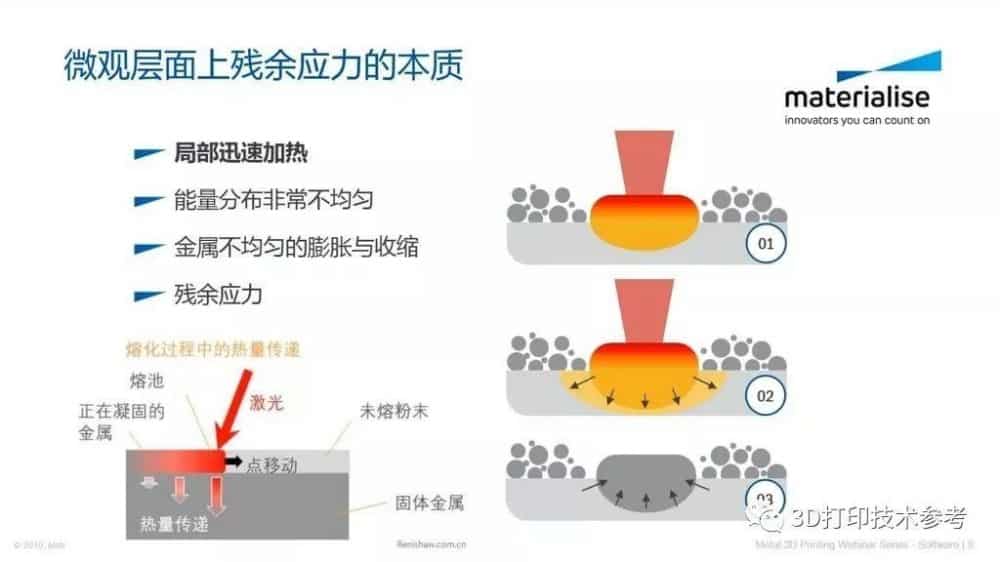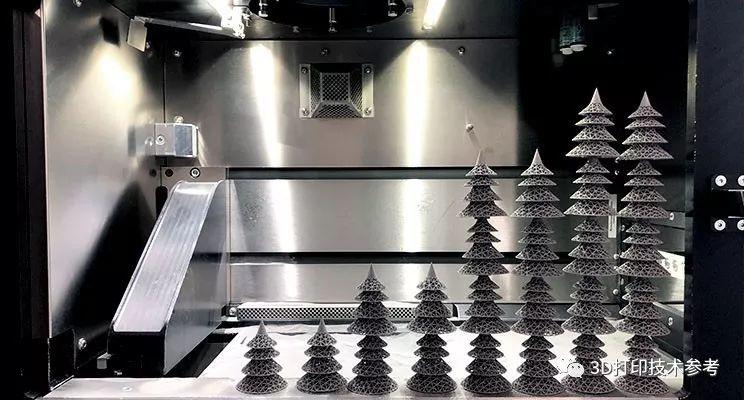In metal powder bed laser melting technology (SLM), the unsupported or reduced number of supports has always been a problem that engineers are very concerned about. The reason is obvious: the number of supports will not only affect the post-processing, but also increase the construction time and material consumption.
Previously, FacFox had focused on the process of EOS to achieve large-level unsupported manufacturing through process control. In this issue, we analyze the possibilities and limitations of SLM’s unsupported manufacturing from a design perspective.
▌The three roles that have to be clearly supported
Conduct heat, resist residual stress, respond to scraper impact
Heat transfer: Due to the low thermal conductivity of powder compared to solid materials, the energy input must be adjusted in the overhanging area. In the specific manufacturing process, the optimized process parameters of the lower surface are usually used to alleviate the heat transfer problem.
Resistance to residual stress: Metal powder bed fusion technology is a typical rapid melting process, especially compared to EBM, it will produce large residual stress. The stress is caused by the temperature gradient caused by the locally concentrated energy input and the temperature difference between the upper solidified layer and the lower cooled layer. The part that has cooled down will inhibit the deformation of the part with higher temperature, which is generated inside the material stress. Rather than solving the residual stress by increasing the printing temperature (which will increase the oxygen absorption) or adopting a special scanning strategy (which will affect the mechanical properties or production efficiency), it is better to pre-deform or design it as a non-deformable structure if possible solve.
Scraper force: During powder spreading, the scraper will generate the force on the parts. If the part is not connected to the building substrate, the part may be taken away by the scraper. Depending on the geometry of the part, the force generated by the scraper is larger or smaller. For parts close to the limit feature, you can choose to use a soft blade, but only a hard blade can guarantee a constant layer thickness. In fact, you can use hard scrapers to print parts, and you can easily replace soft scrapers. For exploratory experiments, verification under more severe conditions is required, so the experiment uses a hard high-speed steel scraper.
▌Outer layer protection design without support structure
The researchers conducted experiments on the effectiveness of the solution. By designing a flat plate with a diameter of 50mm and an inverted cone with a diameter of 50mm and a height of 50mm, using Amphion for simulation, it can be clearly seen that the deformation of the cone is small. It starts from a point and continues to grow in the z-direction. The circle in the XY direction also plays a role in self-stabilization. Compared with the inverted cone, the flat plate is deformed significantly.
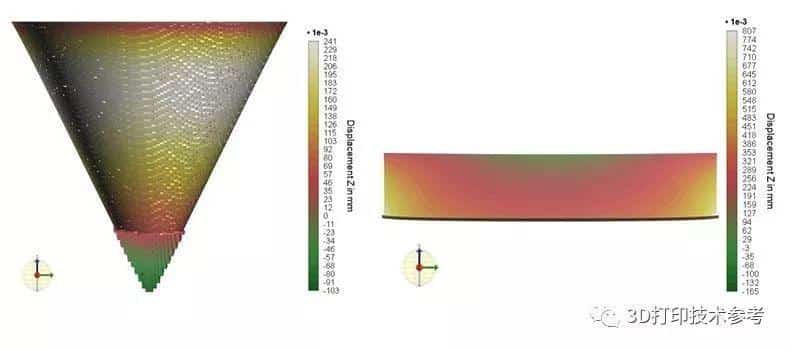
The typical solution to reduce the force of the scraper is to add support, which can reduce the vibration generated by the action of the scraper and parts, and increase the stability of the printing process. If the concept of support is further developed, the shell can be used to protect and stabilize the parts (the gap between the shell and the vertebral body).

The experimental cone is printed on EOS M 290 using TC4, and can be easily removed by hand after completion.
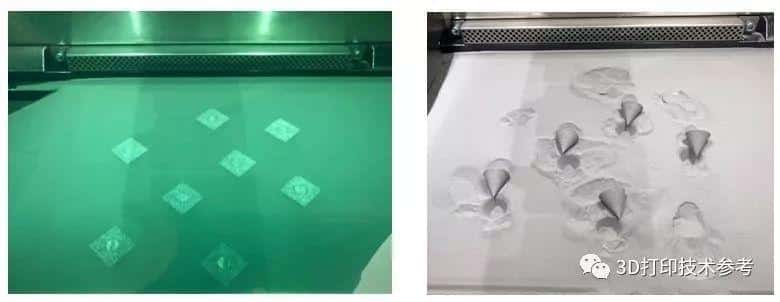
The shell volume of this design is much larger than the parts, so further optimization is needed to find the best design. First, it is not necessary to wrap the entire vertebral body, just wrap a specific area at the beginning, and the friction between the vertebral body and the shell should be sufficient to fix it in place, even for tall parts; another solution It is to stack parts and use the previous part as the shell of the next part.
▌Enhance challenges and optimize the design
The researchers conducted a higher-level challenge, using Siemens NX software to design, the vertebral body was stacked several layers, and nTopology software was modified into a lattice structure, made into a Christmas tree-like shape, and inverted. This shape can be self-supporting, and the “trunk” at the bottom can act as a shell for the upper “tree”. The outer shell formed by the lattice and the vertebral body parts has a slight overlap of 0.1 mm in the XY direction, which can ensure a good connection.
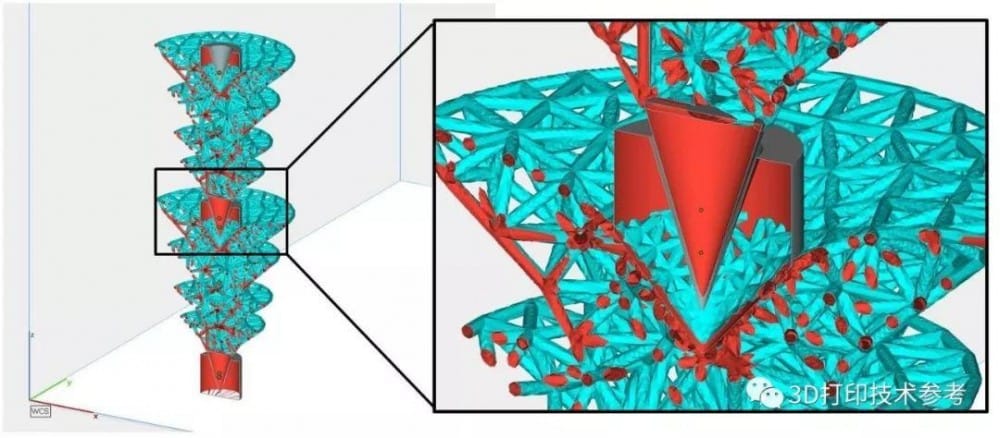


After the parts are loaded into the printer, they are printed with optimized parameters to ensure buildability and productivity. It can be seen from the results that the printing process is stable and the tapered parts are successfully printed.
Analysis and discussion
From the research of EOS, it can be seen that the external auxiliary structure is connected to the finite lattice structure of the solid part to achieve the part fixation, which provides an idea for the engineer’s support design. Obviously, EOS is implementing the manufacture of SLM unsupported structures through the combination of structural design and process adjustment. This echoes the EOS exploration of large-level unsupported processes that we have introduced before. In fact, these two studies are made by Dominated by the same engineer.
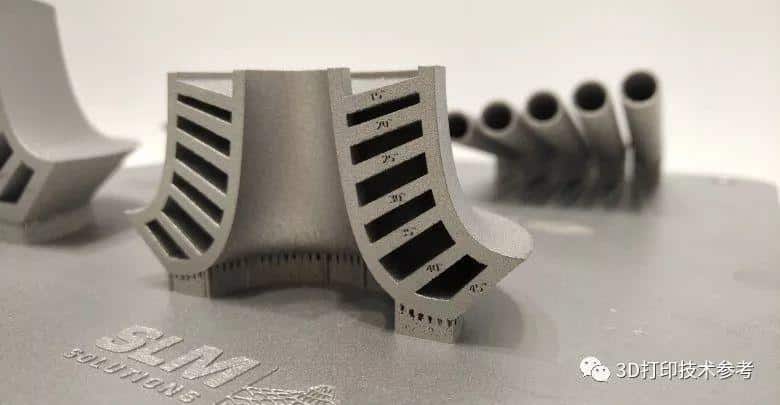
Discussion on whether support is the ceiling of SLM technology, benevolence sees benevolence and wisdom, but at present we do see that VELO3D has achieved better unsupported printing results. In addition, both domestic and foreign traditional SLM equipment manufacturers are also gradually overcoming the previous manufacturing limit, which is mainly reflected in the printing of inclined angles. Through the adjustment of the process, it is possible to easily print at a 15-degree slope without supporting. In the future, we believe that with the advancement of SLM technology online monitoring and process real-time adjustment technology, unsupported printing may be popularized.

